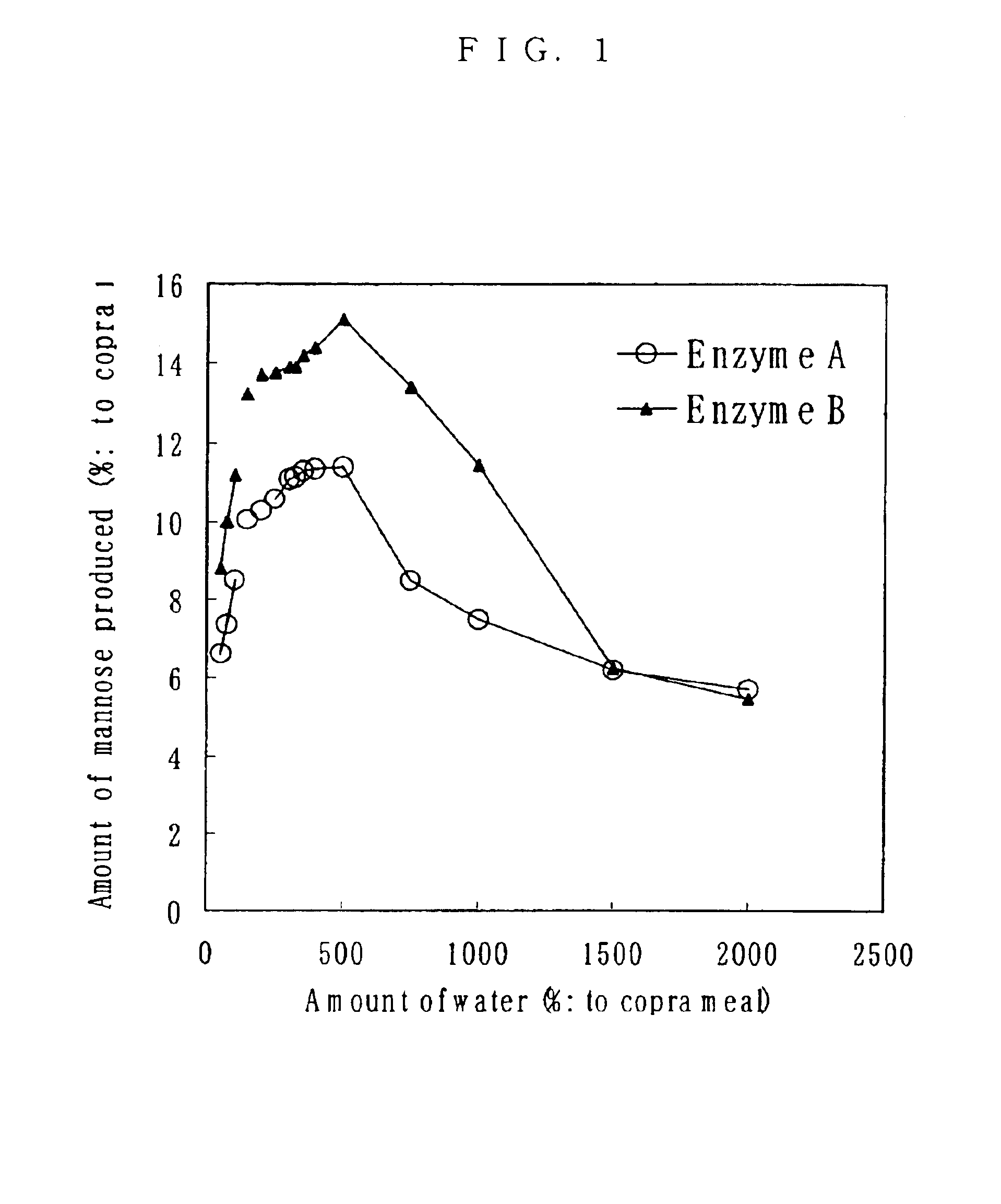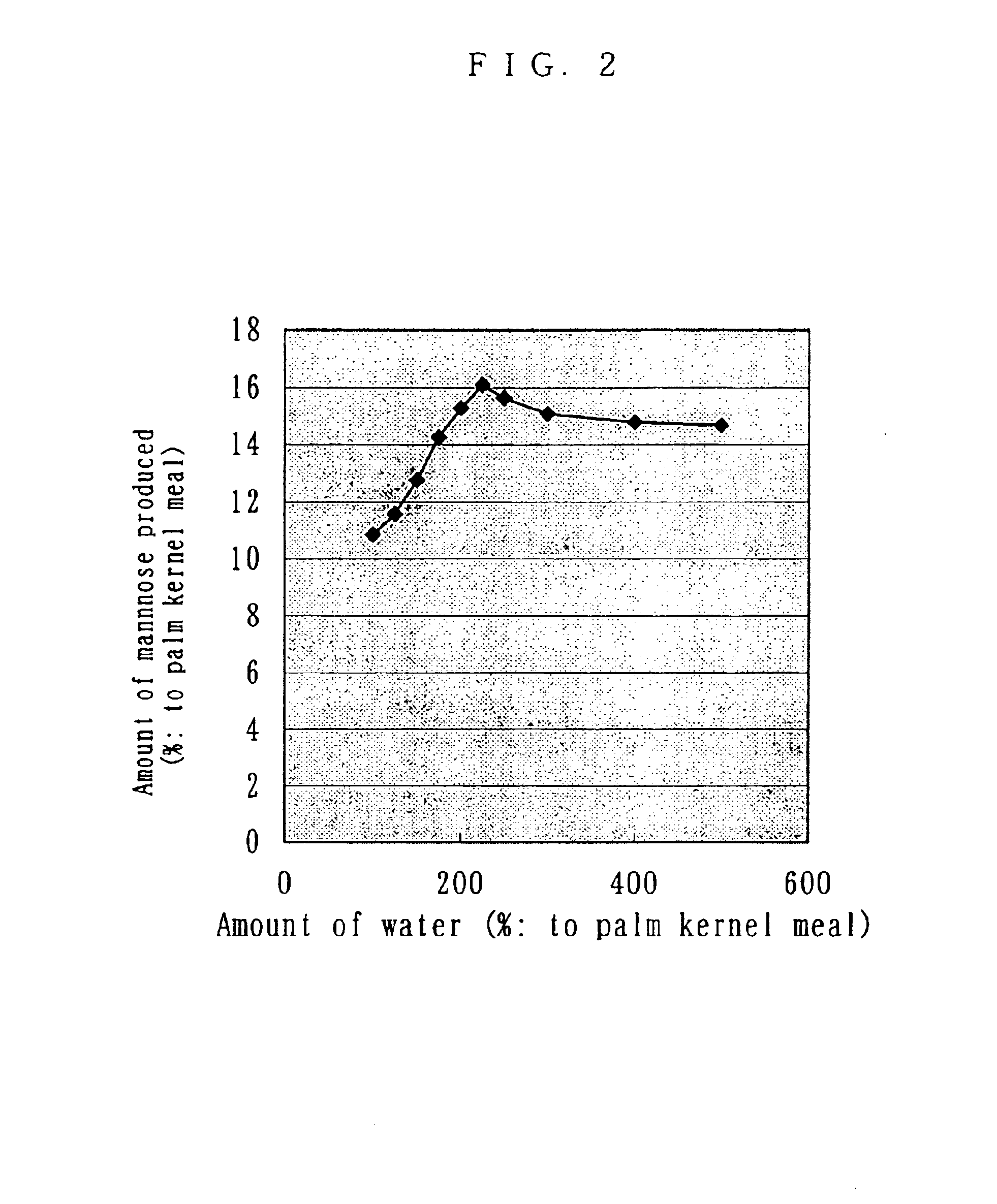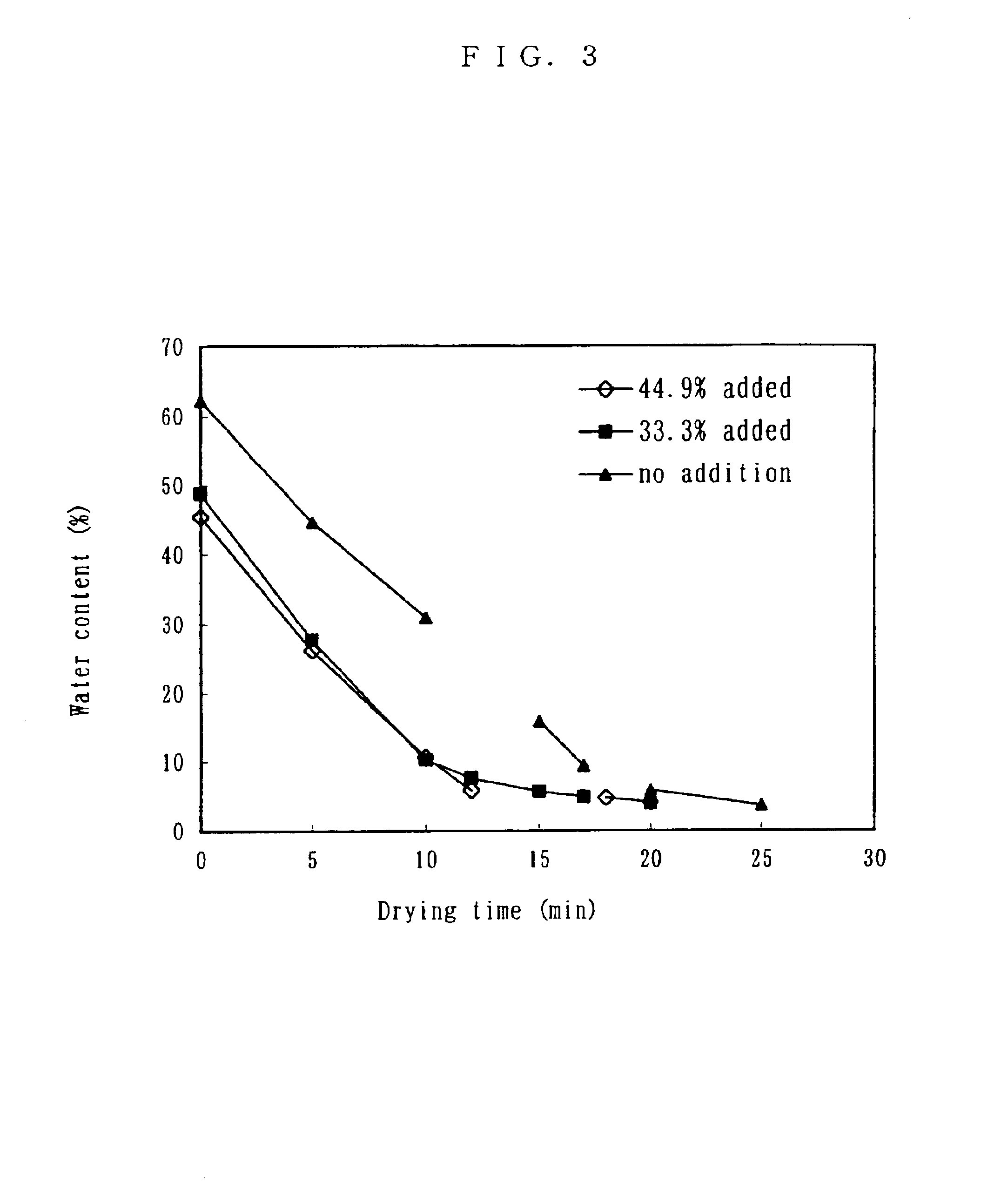Method for producing meal containing mannose
a technology of mannose and meal, which is applied in the field of mannose-producing methods, can solve the problems of high efficiency, high cost of drying, and high extraction efficiency of mannos
- Summary
- Abstract
- Description
- Claims
- Application Information
AI Technical Summary
Benefits of technology
Problems solved by technology
Method used
Image
Examples
example 1
1 / 6 part each of .beta.-galactomannanase (hemicellulase GM "AMANO") and xylanase (hemicellulase "AMANO" 90) were respectively dissolved into water of 150 parts and mixed with 100 parts of expelled copra meal. The mixtures were then placed in sealed containers and kept at 60.degree. C. for 72 hours for reaction. Like in the preliminary test, after the reaction, the amount of mannose was determined and 250 parts of reactant (wet component) including 9.9 parts of mannose were obtained. Dried reactant (water content: 8.22%, mannose content: 10.3%) was added to the reactant at the ratio of 33.3% and 45%, followed by drying and comparing the working properties. A dryer used was Batch oscillating fluidized-bed dryer, MDBV-600 (Fuji Paudal), which was operated with the inlet air of 70.degree. C. and the blow of 5-7 m3 / min. Water content of the dried product was targeted to be 9% or under. The results are shown in Tables 3, 4, and 5, along with FIG. 3. The data values in the graph shown in F...
example 2
1 / 6 part each of .beta.-galactomannanase (Hemicellulase GM "AMANO") and xylanase (hemicellulase "AMANO" 90) were respectively dissolved into water of 125 parts and mixed with 100 parts of expelled copra meal. The mixtures were then placed in sealed containers and kept at 60.degree. C. for 72 hours for reaction. Like in the preliminary test, the post-reaction mannose production was determined and 225 parts of the reactant including 9.4 parts of mannose were obtained. Dried reactant (water content 7.80%, mannose content, 9.60%) or copra meal untreated with enzyme (water content, 6.00%) was added to the reactant at the ratio of 33.3%, that were then dried and their working properties were compared. The dryer used was the Micron dryer MDV-1 (The Hosokawa Micron Group), a continual direct heating flash dryer. The drying condition was 150.degree. C. inlet air and 85.degree. C. outlet air.
TABLE 7
TABLE 8
When powder particles were not added, adhesion to the inner wall of the dryer was increa...
example 3
0.11 and 0.26 parts of .beta.-galactomannanase (Hemicellulase GM "AMANO") and cellulase (Cellulase Y-NC) were respectively dissolved into water of 350 parts and mixed with 100 parts of expelled copra meal. The mixtures were then placed in sealed containers and kept at 60.degree. C. for 72 hours for reaction. Like in the preliminary test, the post-reaction mannose production was determined and 450 parts of the reactant including 16.1 parts of mannose were obtained. Copra meal untreated with enzyme (water content: 4.45%) was added to the reactant with the amounts of 30% and 40% of said reactant, after which they were dried and their working properties were compared. A batch fluidized-bed dryer (Okawara MFG.) was used. The drying condition was inlet air of 70.degree. C.
TABLE 10
TABLE 11
The level of water content for the reaction was so high that it was unable to directly put into the dryer. As the preliminary test revealed, the reaction under high water content increased mannose product...
PUM
 Login to View More
Login to View More Abstract
Description
Claims
Application Information
 Login to View More
Login to View More - R&D
- Intellectual Property
- Life Sciences
- Materials
- Tech Scout
- Unparalleled Data Quality
- Higher Quality Content
- 60% Fewer Hallucinations
Browse by: Latest US Patents, China's latest patents, Technical Efficacy Thesaurus, Application Domain, Technology Topic, Popular Technical Reports.
© 2025 PatSnap. All rights reserved.Legal|Privacy policy|Modern Slavery Act Transparency Statement|Sitemap|About US| Contact US: help@patsnap.com



